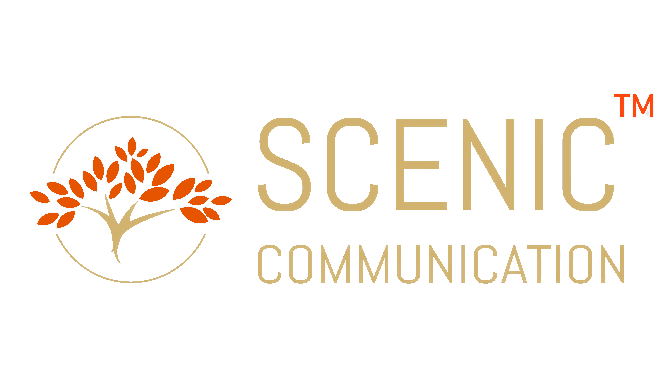Unraveling the News Media Mosaic: Understanding the Diverse Tiers of Media Outlets and Their Impact from an Indian Perspective

In India, the news media landscape is a colorful tapestry, rich with diversity and complexity. The country’s vibrant democracy is reflected in the myriad of media outlets that cater to its vast and varied population. From traditional print newspapers to digital-first platforms and hyper-local community newspapers, the Indian news media mosaic is a fascinating reflection of the nation’s dynamic socio-political fabric. Understanding the diverse tiers of media outlets and their impact is essential to grasp how information dissemination influences public opinion and shapes the Indian narrative.
The Evolution of Indian News Media:
India’s news media has come a long way since its inception during the colonial era. Historically, print newspapers held a prominent position, playing a crucial role in India’s struggle for independence and post-independence nation-building. However, with advancements in technology and the widespread adoption of the internet, the media landscape underwent a seismic shift.
Today, India is one of the largest consumers of digital media globally, with an ever-expanding online population. Digital media platforms, including news websites, mobile applications, and social media channels, have gained significant traction. Additionally, television remains a dominant medium, reaching millions of households across the country. Furthermore, regional and vernacular media outlets have played a pivotal role in reaching diverse linguistic and cultural communities, amplifying their unique perspectives.
The Tiers of Media Outlets in India:
To comprehend the impact of Indian news media, let’s delve into the different tiers of media outlets that exist in the country:
Mainstream Media:
Traditional print newspapers such as The Times of India, The Hindu, and Hindustan Times fall under this category. Besides, established television news channels like NDTV, Times Now, and Republic TV are considered mainstream media. These outlets possess a substantial reach and maintain a reputation for credible and in-depth journalism. They continue to play a significant role in shaping public opinion, particularly among urban and English-speaking audiences.
Digital Natives:
Digital-native outlets have surged in popularity with the rise of the internet and smartphone penetration. Online news portals like The Wire, Scroll.in, and The Quint are examples of this category. They cater to a tech-savvy audience and offer real-time news updates, interactive features, and multimedia content. Digital natives often bring a fresh perspective to the news and frequently cover issues ignored by mainstream media, making them popular among the younger generation.
Regional and Vernacular Media:
India’s linguistic diversity is reflected in the plethora of regional and vernacular media outlets that cater to specific states and language-speaking communities. These outlets, such as Anandabazar Patrika (Bengali), Dainik Bhaskar (Hindi), and Mathrubhumi (Malayalam), have a vast readership and play a crucial role in shaping regional narratives. They bridge the information gap for non-English-speaking audiences and promote regional culture and identity.
Community-based and Hyper-local Media:
Community newspapers, neighborhood blogs, and hyper-local digital platforms operate at the grassroots level, focusing on local issues and interests. These outlets play a vital role in disseminating information relevant to specific communities, fostering civic engagement, and highlighting local concerns that may be overlooked by national media.
The Impact of Indian Media Outlets:
The diverse tiers of Indian media outlets have a profound impact on society and governance:
Political Discourse and Agenda-Setting:
Mainstream media outlets wield significant influence in shaping political discourse and setting the national agenda. Their reporting can sway public opinion, influence policy decisions, and impact electoral outcomes.
Regional Identities and Cultural Preservation:
Regional and vernacular media outlets play a pivotal role in preserving and promoting regional identities and cultural heritage. They ensure that local issues and voices are heard and accounted for in the broader national narrative.
Digital Connectivity and Information Access:
Digital natives and hyper-local media outlets leverage technology to bridge information gaps, especially in remote and underserved areas. They contribute to increasing digital connectivity and access to information, empowering citizens to make informed decisions.
Language Inclusivity and Diversity:
Vernacular media outlets democratize information access for non-English-speaking populations, fostering language inclusivity and celebrating India’s linguistic diversity.
Media Ethics and Misinformation:
As the Indian media landscape becomes increasingly competitive, concerns about media ethics, sensationalism, and misinformation have arisen. Fact-checking initiatives and media literacy efforts are crucial to combat the spread of fake news and misinformation.
Conclusion:
The Indian news media mosaic is a vibrant blend of traditional, digital, regional, and community-based outlets, each contributing uniquely to the country’s information landscape. As media consumers, it is essential to be discerning and critical of the content we consume, whether from mainstream media, digital natives, or hyper-local sources. Developing media literacy skills allows individuals to navigate the diverse tiers of media outlets, ensuring a well-rounded understanding of India’s complex socio-political reality. As the Indian media continues to evolve, fostering a healthy and inclusive media ecosystem is vital for sustaining a robust democracy and informed citizenry.
Why Scenic Communication?
DIGITAL PR & MARKETING SOLUTIONS FOR INDIAN STARTUPS AND BUSINESSES
We have created a distinctive advantage by giving holistic and Integrated Marketing Communications solutions to our client’s needs. Best PR Agency in Mumbai – Scenic Communication, therefore takes pride in not only providing effective public relations solutions to a brand but also with its girth, width and penetration, provide integrated communications solutions to the brand objectives of a client. With our strategic alignments and specialists on board we have geared innovation and value creation into all aspects of Brand & Reputation building. Having had domain expertise in multi-dimensional categories like – Corporate & Finance, Education, Real Estate, Infrastructure, Automobiles, IT & ITES, Government Development Boards, Tourism & Hospitality, Retail, FMCG, Fashion and the Entertainment industry; we provide innovative communications programs that focus on tangible business results.
Visit Scenic Website : https://sceniccomm.in/


